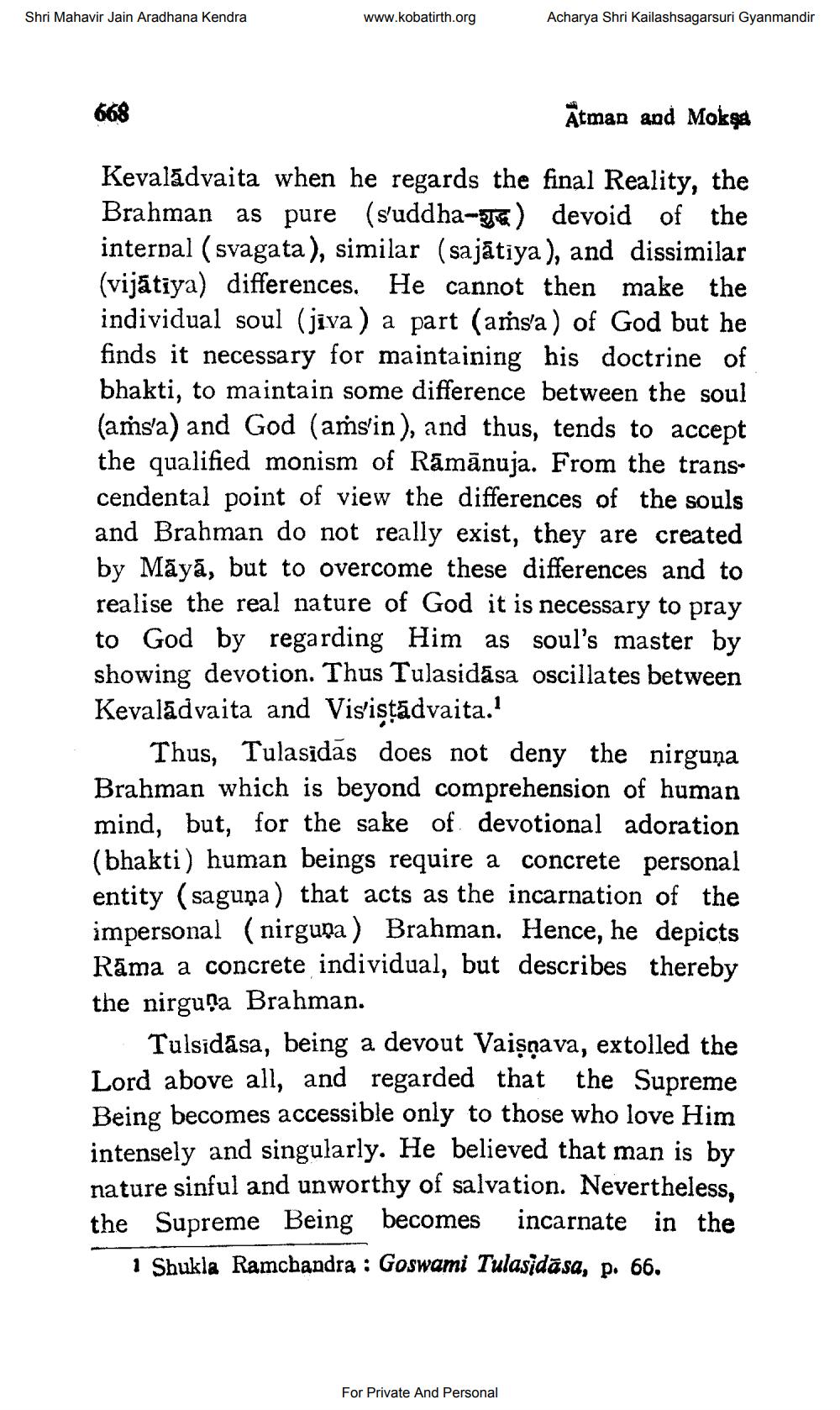________________
Shri Mahavir Jain Aradhana Kendra
www.kobatirth.org
Acharya Shri Kailashsagarsuri Gyanmandir
668
Atman and Moks
Kevaládvaita when he regards the final Reality, the Brahman as pure (s'uddha-ya) devoid of the internal (svagata), similar (sajātiya), and dissimilar (vijātiya) differences. He cannot then make the individual soul (jiva) a part (amsa) of God but he finds it necessary for maintaining his doctrine of bhakti, to maintain some difference between the soul (amsa) and God (aṁs'in), and thus, tends to accept the qualified monism of Ramānuja. From the transcendental point of view the differences of the souls and Brahman do not really exist, they are created by Māyā, but to overcome these differences and to realise the real nature of God it is necessary to pray to God by regarding Him as soul's master by showing devotion. Thus Tulasidasa oscillates between Kevalādvaita and Vis'iştādvaita.?
Thus, Tulasidas does not deny the nirguna Brahman which is beyond comprehension of human mind, but, for the sake of devotional adoration (bhakti) human beings require a concrete personal entity (saguņa) that acts as the incarnation of the impersonal (nirgupa) Brahman. Hence, he depicts Rāma a concrete individual, but describes thereby the nirguņa Brahman.
Tulsidasa, being a devout Vaişņava, extolled the Lord above all, and regarded that the Supreme Being becomes accessible only to those who love Him intensely and singularly. He believed that man is by nature sinful and unworthy of salvation. Nevertheless, the Supreme Being becomes incarnate in the
1 Shukla Ramchandra : Goswami Tulasidasa, p. 66.
For Private And Personal




